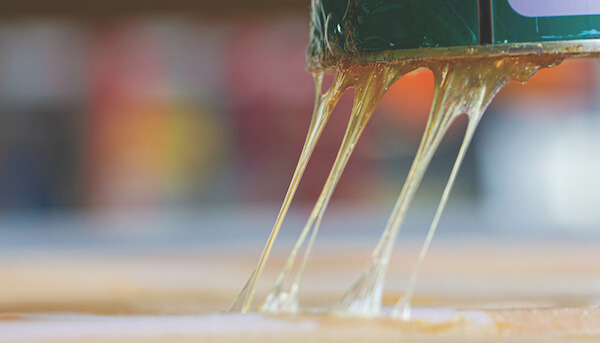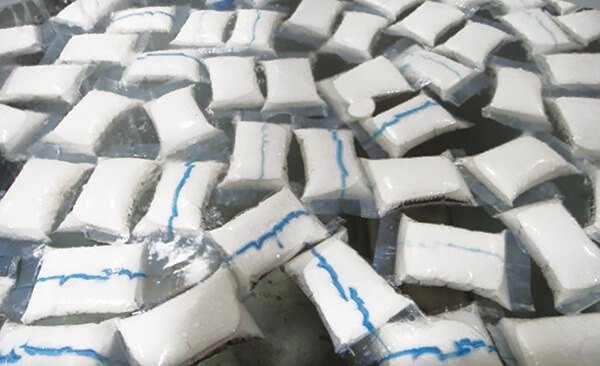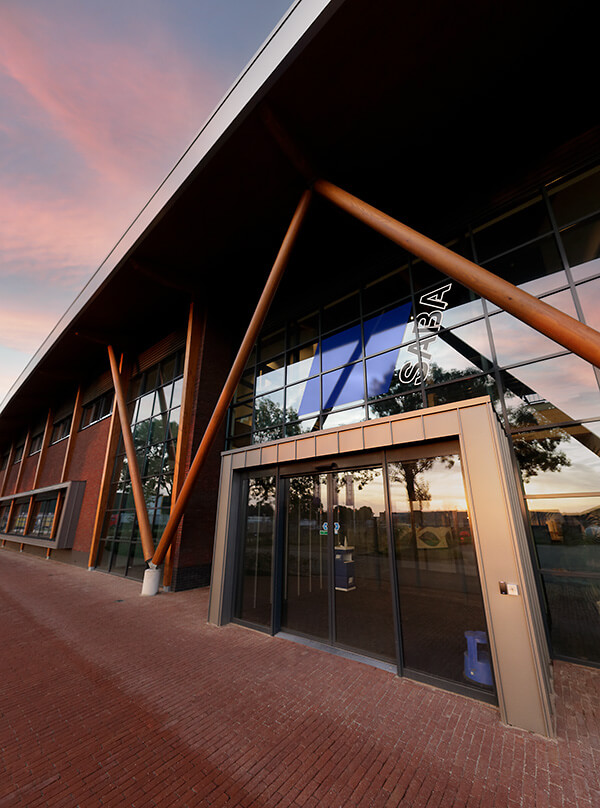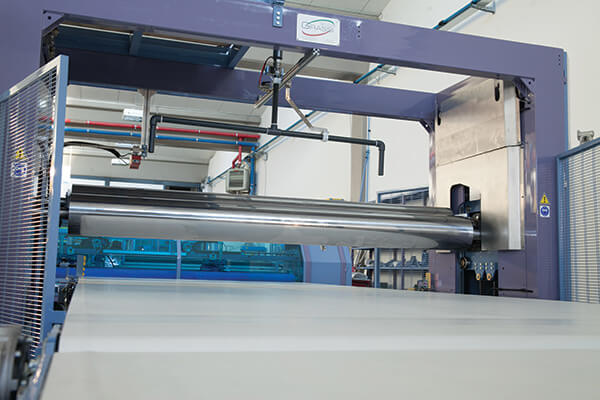In an evolving industry, glue suppliers hold things together through innovations and looking forward.

Of all home goods categories, bedding has arguably seen the most change over the past decade. With direct-to-consumer disruptors, boxed-bed models and a host of new and varied feature innovations, mattresses have changed significantly in both style and construction. And as the industry evolves, so must the components that come together to create its products.
Of the pieces and parts that combine to build mattresses, adhesives play a vital role — literally holding everything together. Because of that, adhesive makers are constantly innovating to meet the demands of an ever-changing marketplace.
“Adhesives are challenged with keeping up and complementing all new innovations where bonding solutions are required,” says John Buday, regional market segment manager of adhesives for Clariant, based in Muttenz, Switzerland, with U.S. headquarters in Louisville, Kentucky.
And whether it’s meeting the design and construction needs of mattress makers, incorporating sustainable processes or working with a shifting supply chain, adhesive companies have learned to be nimble and forward-thinking.
Meeting the need
As mattress manufacturers continue to innovate, adhesive makers have evolved right along with their customers to provide solutions to fit their changing products.
One of the most significant shifts in recent years has been the rise of boxed mattresses, which requires bed components to withstand the roll-pack process and shipping.

Henkel Corp.’s Technomelt AS 4999 offers a quiet bond and can be used in all construction layers, including foam encasements and pillow tops.


“The biggest change recently has been the dramatic shift from flat-packed to roll-packed mattresses,” says Alex Matassa, senior territory manager for Henkel Corp., based in Dusseldorf, German, with U.S. headquarters in Rocky Hill, Connecticut. “Roll packing introduces added manufacturing and adhesive challenges.”
Matassa says Henkel’s customers are looking to reduce or eliminate drying time of water-born adhesive systems. Mattress producers also want bond lines that are quiet when fully set, need to be able to immediately handle bonded pieces and seek to improve final bond strengths.
The company has launched several new hot-melt adhesives in its Technomelt line to address this need, including AS 4999 Blue, a colored hot-melt that produces quiet bonds and can be used for all mattress construction areas, including foam encasements, layers and pillow tops. And its Pur 7117 line is a urethane-based hot-melt for roll-coat or extrusion applications which provides great bonds at low-volume application rates, Matassa says.
With mattress manufacturers regularly introducing new materials to their designs, adhesives also must keep up to ensure their products are compatible.
“Mattress design is very dynamic with new cushioning materials being developed continuously,” says Steven Adams, business manager for Richmond, Virginia-based Worthen Industries Inc. “Worthen works very closely with our customers to solve any challenges that arise when a new material is introduced into the mattress manufacturing process.”
Worthen does that by providing experienced support technicians when their customers introduce new cushioning materials or machinery to their processes. This front-end assistance helps the company mitigate issues with new materials before they happen.
“New materials can be a challenge for adhesives in how they respond to the entire process,” Adams says. “Certain materials can process easily, and others might require special handling techniques or other equipment to be utilized. We assist in the implementation and scale up, while also setting the process parameters that are most important for bonding success.”
Product changes aren’t the only aspect of the bedding business that adhesive companies are working to address. As the heightened demand of the pandemic tapers, mattress makers are tightening their belts to maintain profitability. According to investment firm Piper Sandler’s November Mattress Retailer Survey — which covered the 2022 Black Friday and Cyber Monday shopping periods — retailers reported average total sales growth down 14%, with average units falling 19%, compared with 2021.
“In this season of reduced consumer demand and strained margins, our customers are looking for opportunities to cut costs without compromising quality,” says Jim Turner, business director SABA North America based in Kimball, Michigan.
To that end, SABA introduced a new water-based adhesive designed to provide quality bonds at a more economical price, he says. The adhesive joins SABA’s array of options that allow customers to select a product that fits their price needs without sacrificing quality.
“Our research in the past year with alternative raw materials has opened new opportunities where we can now offer what we will refer to as a ‘menu’ of adhesive options,” Turner says. “It’s basically a ‘good, better, best’ type of offering and allows the customer to decide which product is the best fit for their production needs.”
Worthen also has worked to help its customers reduce costs by improving efficiency. The company’s adhesives, such as the new FoamLam QuickTac and Versadhere Roll, are designed to enhance efficiency in the foam lamination bonding area of mattress facilities by requiring less adhesive to create a bond, among other features.
“These adhesives only require low glue application amounts, which save on materials,” Adams says. “They are very fast to develop strength, thereby allowing the assembly operators to make more laminations per shift with fewer delaminations. This is an improvement in process output, as well as reducing production scrap rates due to poor quality of the bond.”
Securing the supply chain
Supply chain disruptions brought on by the Covid-19 pandemic and events such as the 2021 winter storm in Texas wreaked havoc on the mattress supply chain, causing shortages of everything from foam to chemicals needed to make adhesives. While many of those problems have been overcome, the instability of the supply chain became a major pain point for adhesive makers.

“We all faced supply chain issues in the past year, but the biggest challenges are now behind us,” Turner says. “Although raw material availability has greatly improved, costs remain high. We are hopeful that we’ll begin to see some relief in the first half of 2023.”
One way SABA put supply chain challenges behind it was diversifying its suppliers so the company wouldn’t be reliant on any one company or source and, therefore, vulnerable to disruptions.
“Overall, I think the supply challenges of the post-pandemic era made us a better company,” Turner says. “It forced us to evaluate alternative suppliers, raw materials and formulations to make us less dependent on any one source or material.”
Worthen Industries also has made adjustments to its supply chain, both in sourcing and production, to avoid future issues such as those caused by the pandemic.
“We make it a priority to have multiple suppliers of materials from multiple regions of the world,” Adams says. “This allows us to have a secure supply of materials. We also have multiple production sites, creating security of manufacturing for our customers.”
Pandemic-related supply chain issues spurred Savare Specialty Adhesives to rethink their sourcing, as well, forging partnerships with multiple suppliers to make sure they always have a backup plan.
“Supply chain disruption has been a challenge,” says Paolo Campitelli, product manager and technical lead for Milano, Italy-based Savare, with U.S. offices in Delaware, Ohio. “Fortunately, Savare is always working on contingency plans to guarantee supply security and consistent quality to our customers.”
Sustainable solutions
Sustainability has become a priority for both consumers and mattress makers. According to the Better Sleep Council’s most recent survey, two-thirds of consumers would pay more for a mattress manufactured using environmentally sustainable practices or materials. Additionally, the survey found four out of 10 consumers said they would be willing to pay up to 10% more for mattresses made sustainably.
So, when manufacturers source organic cotton and latex to create a sustainable bed, they want to be certain the adhesives they use meet the same environmental standards as other materials in the mattress. Likewise, manufacturers are looking for adhesives that will not create obstacles when today’s mattresses are discarded for recycling years in the future.
“As consumer demand for sustainable products continues to grow, suppliers like SABA also must bring new foam bonding solutions to align with this need, even if we play only a small part of the total mattress construction,” Turner says.
To meet that challenge, adhesive companies have introduced a spate of adhesives that offer performance without being detrimental to the environment.
SABA will introduce what it says is the world’s first bio-based, rollable water-based adhesive for mattress construction. The adhesive bonds to anything you can put in a mattress, including pocketed coil units, Turner says. It has a high solids content and can be used with or without thermal activation.
“Our customers will want to use it because of its performance, while at the same time it will support sustainability due to the fact that it’s bio-based,” he says. “I anticipate that this could be the most important product launch in our history.”


Clariant has introduced several natural and recycled adhesives in recent years. The company’s Terra line is derived from nonfossil fuel C2/C3, namely cooking oils, with the ability to specify no palm oils. Clariant’s Circle adhesive is made with recycled plastic, and the company also added a rice-derived wax.
“We have a line of rice bran waxes that are derived from the husk of rice, which is considered a waste product, so as not to interfere with a food source,” Buday says.
Savare also has introduced several bio-based adhesives, which have earned the International Sustainability and Carbon Certification Plus Certificate. The company also has a worldwide patented packaging system, Safemelt, that fully eliminates water waste and significantly reduces energy consumption.
Henkel has added sustainable products to its organizationwide effort to reduce its environmental impact. The company offers bio-based adhesives and “mono material” products that can make mattress recycling easier and more efficient.
The Mattress Recycling Council has created a workgroup comprised of several adhesive suppliers to explore the role adhesives can play in helping recyclers increase the weight percentage of materials that can be recycled from discarded mattresses. (See story on page 34.)
Making recycling easier and increasing circularity has been a priority for Worthen, as well. “Adhesives can be a key player when creating a mattress design that will be easier to disassemble for recycling or will not be a contaminate that hinders recycling of adhesive containing components,” Adams says.
Adhesive makers are working to improve sustainability in their facilities and production processes, too.
Montemurlo, Italy-based Gruppo Grassi focuses on reducing power and air consumption of its machinery, with the company’s engineering team dedicating a project manager to overseeing the number of motors running and powering down equipment when it’s not needed. And Clariant sets internal targets for reducing consumption of energy, as well as production of waste and wastewater.
Worthen established corporate sustainability goals that include a 30% reduction in Scope 1 and Scope 2 carbon emissions by 2030, a 30% improvement in normalized energy efficiency by 2030 and a 25% reduction in normalized waste generation by 2027.
Henkel also has set a number of sustainability goals focused on three pillars: climate, circularity and nature. Among its goals, the company aims for climate-positive operations by 2030, 100% of packaging designed for recyclability or reusability by 2025 and using 100% responsibly sourced and externally assured palm oil by 2025.
SABA opened a new headquarters in September that was designed to operate more efficiently and reduce the company’s impact on the environment.
“From solar panels making our offices energy neutral to a sedum-covered roof for insulation and a complete geo-thermal-based HVAC system, the new SABA headquarters is a true representation of our commitment to sustainability,” Turner says.
And whether it’s taking a forward-thinking approach to sustainability, securing a reliable supply chain or creating new products and solutions for an ever-changing industry, adhesive makers are working to meet the needs of the mattress industry.




